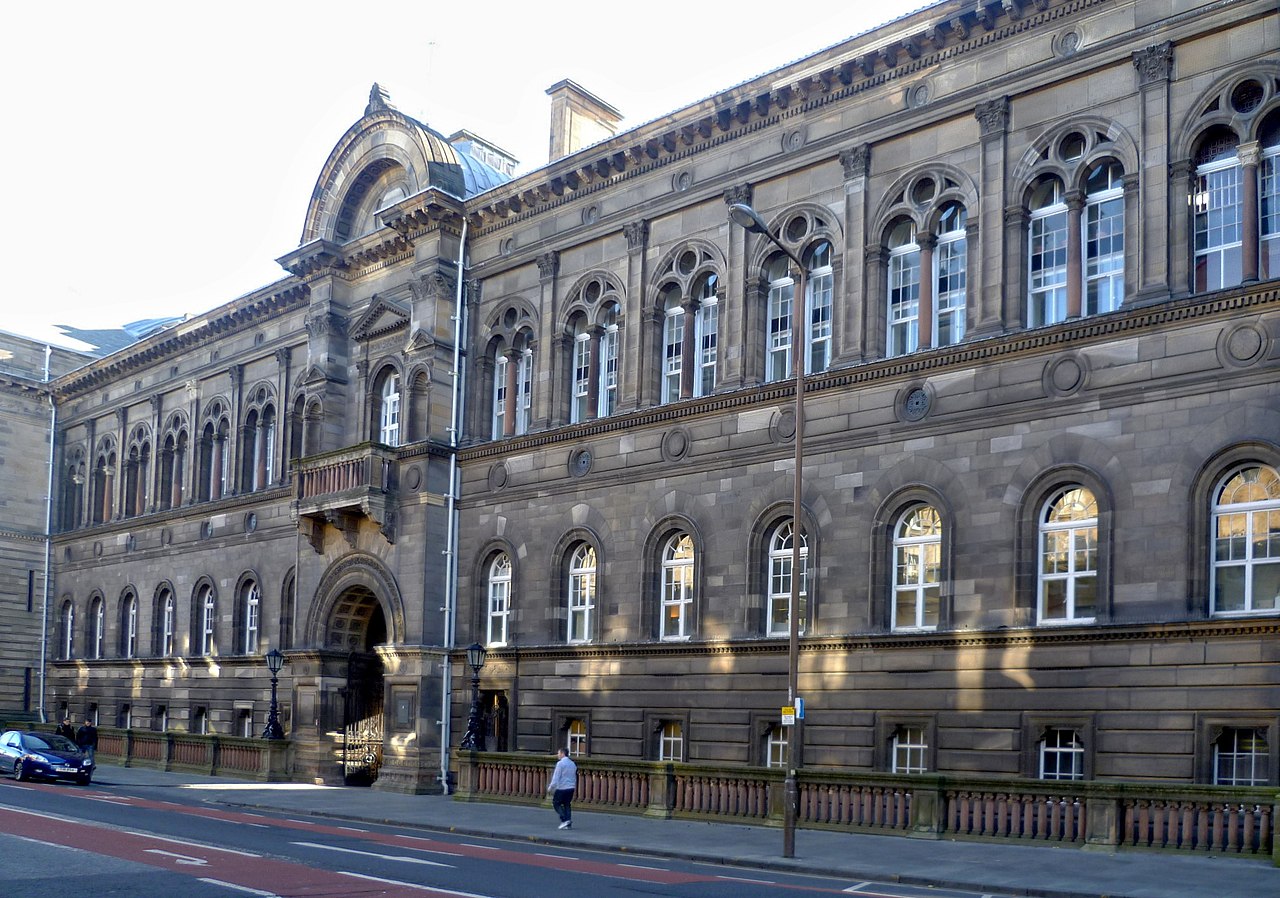
Medical School building, Edinburgh
Photograph: Kim Traynor, Wikimedia Commons (BY-SA)
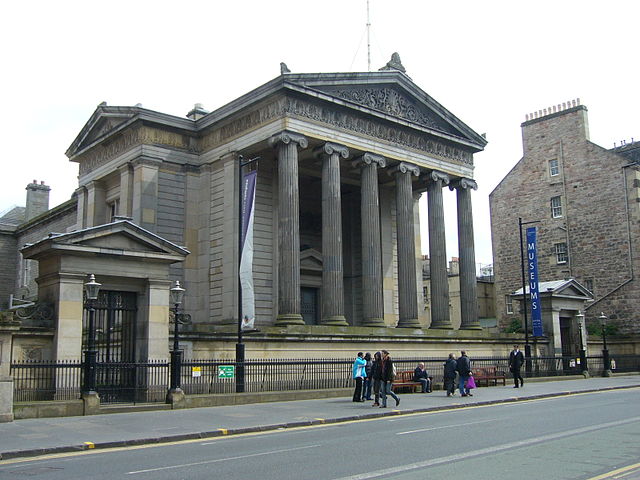
Surgeon's Hall, Edinburgh
Photograph: Kim Traynor, Wikimedia Commons (BY-SA)
The Edinburgh Medical School
The Medical School Buildings in Teviot Place were opened in 1888. However, medicine had been taught in Edinburgh since the beginning of the 16th. century. The city's medical school was officially founded in 1726 under the supervision of Alexander Monro primus (1697 – 1767). As professor of anatomy, he and subsequently his son Alexander Monro secundus (1733 – 1817) were associated with the ascendancy of the medical school during the Enlightenment until it was considered preeminent throughout the English speaking world. A series of brilliant teachers, including William Cullen (1710 – 1790) , James Gregory (1753 – 1821) and Joseph Black (1728 – 1799) enhanced the school's reputation and the Edinburgh Model of medical teaching, consisting of both sciences and clinical medicine, developed by John Rutherford (1695 – 1779) in the 18th century, was replicated at several schools around the world. The school's fame was maintained throughout the 19th. century and even today it has been ranked among the top 25 worldwide. A less savoury side was evident at the beginning of the 19th. century, when there was a shortage of cadavers for anatomical dissection. The shortfall was alleviated by body snatchers who disinterred recently buried corpses and sold them to the anatomist Robert Knox (1793 -1862). Rather than digging up graves, the infamous couple, Burke and Hare resorted to murdering sixteen of the lodgers at Hare's boarding house and selling the corpses to Knox for £7 10s each, despite the latter recognizing the victims' unnatural cause of death. Burke and Hare were finally brought to trial, the former being hanged in 1829, while the latter was escorted out of Edinburgh, his eventual fate unknown. Thereafter a rhyme was to be heard on Edinburgh streets:
"Up the close and doon the stair,
But and ben' wi' Burke and Hare.
Burke's the butcher, Hare's the thief,
Knox the boy that buys the beef."
The author of this guide, like Knox, is an alumnus of both the Royal High School and Edinburgh Medical School.
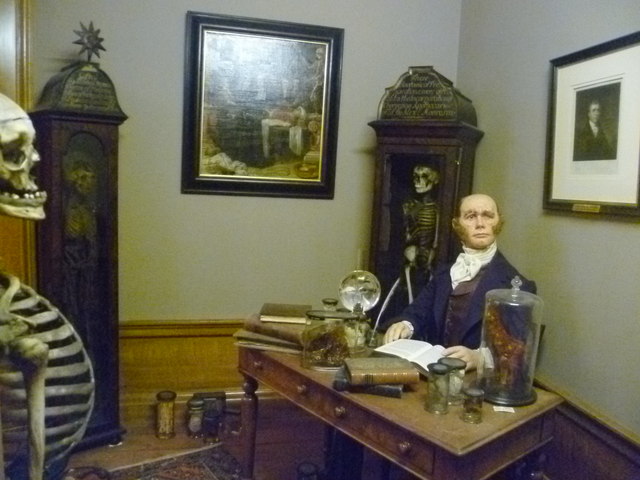
Robert Knox tableau, Royal College of Surgeons' Museum
Photograph: Kim Traynor, Geograph (CC-BY-SA)
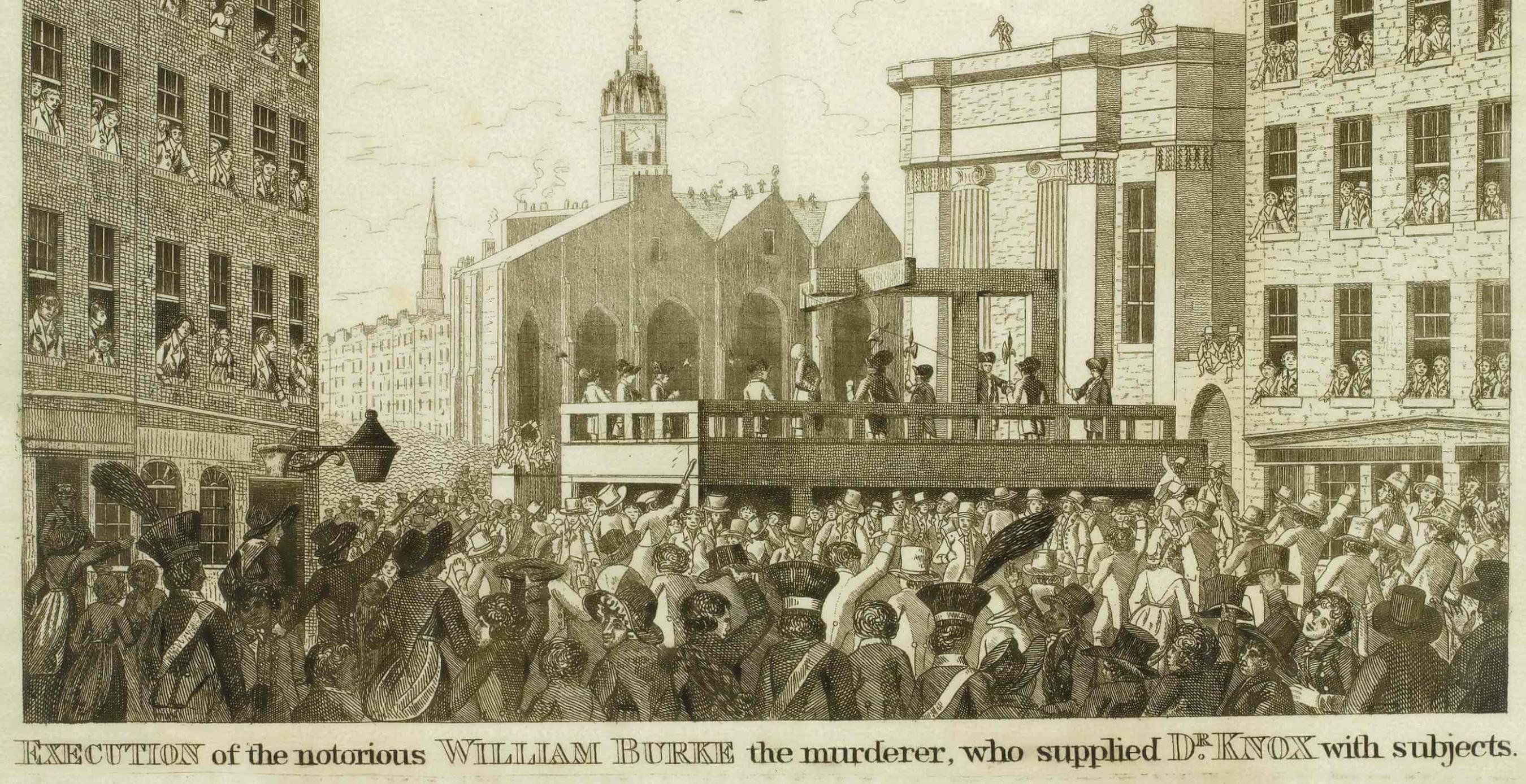
Execuion of Burke and Hare,
Engraving, public domain
Walk east 20 on Lauriston Place towards Forrest Road.
Turn sharp left onto Forrest Road and continue for 160 metres.
Turn left onto Candlemaker Row and you will find Greayfriars Kirkyard after 130 metres on the left.
Greyfriars Kirkyard
Walk 300 metres north from the medical school on Forrest Road and you will come to Greyfriars Kirkyard on your left. It might be considered morbid to end our walk in a graveyard, but mention must be made of Greyfriars, given the large number of notables buried therein. The kirk itself was opened in 1620 and was the site of the signing of the National Covenant in 1638 at the time of the Reformation. By the eighteenth century it was the favoured resting place of the city's elite. You will find the gravestones of many of the key figures of the Enlightenment mentioned in other sections of this guide including:
• William Adam (architect) (1689–1748), and son John Adam (architect) (1721–1796)
• Joseph Black (1728–1799), physician (CP)
• James Burnett, Lord Monboddo (1714–1799) judge (CP - unmarked)
• James Craig (1739–1795), architect and designer of Edinburgh's New Town
• James Hutton (1726–1797), geologist (CP)
• John Kay (caricaturist) (1742–1826)
• Alexander Monro (1697–1767) and son Alexander (1733–1817), famed anatomists
• Allan Ramsay (1686–1758), poet
• William Robertson D.D. (1721–1793), historian
• William Smellie (encyclopedist) (1740–1795) creator of the Encyclopædia Britannica
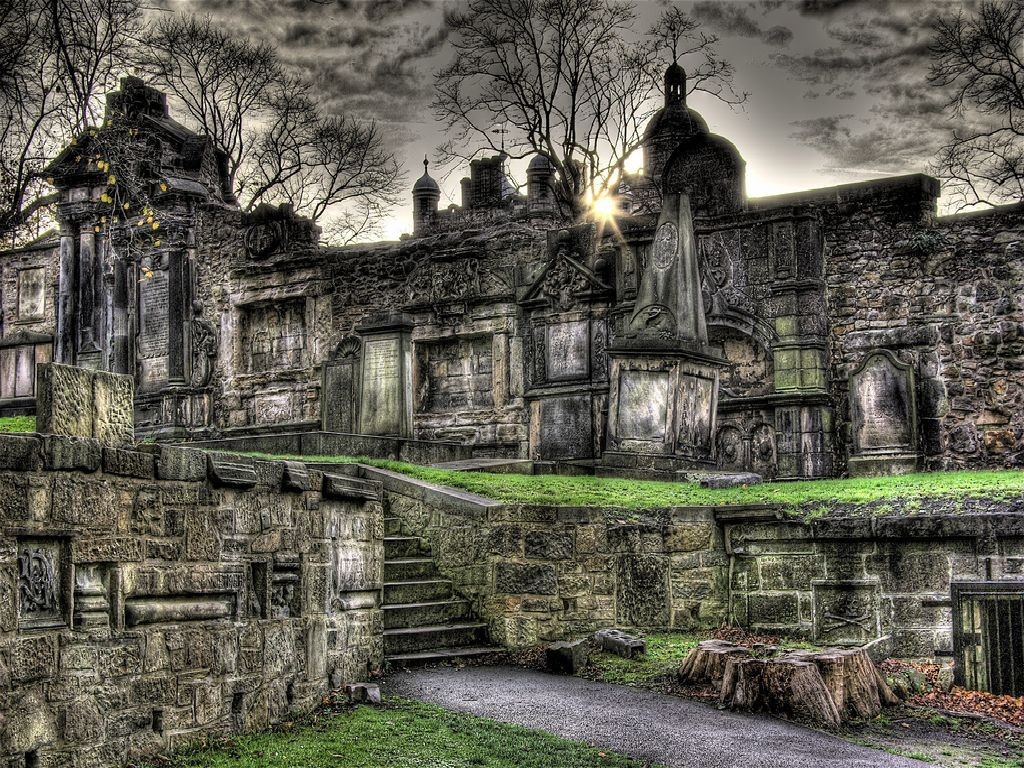
Greyfriars Kirkyard
HDR Photograph, public domain
